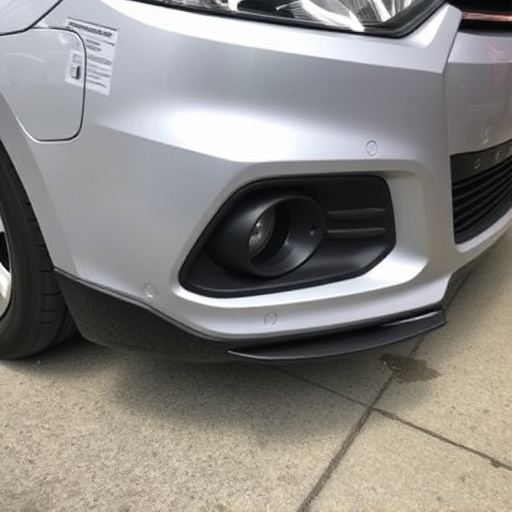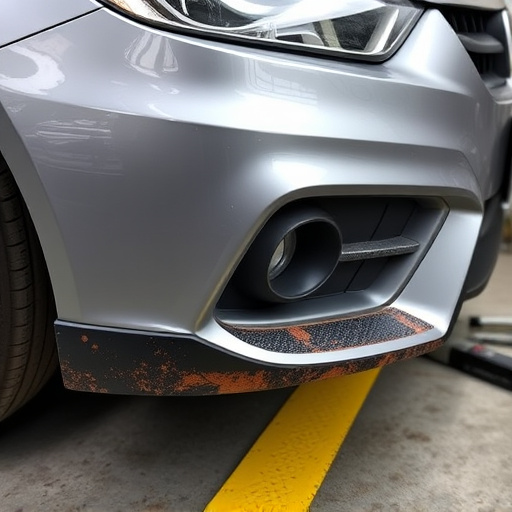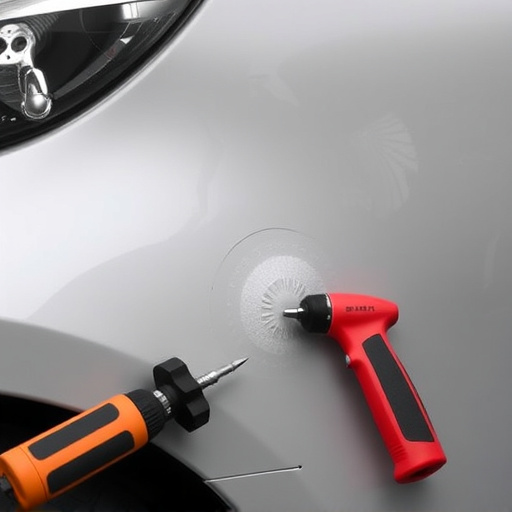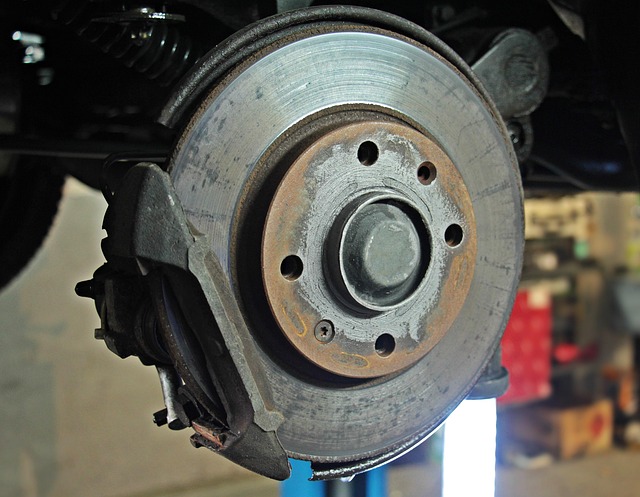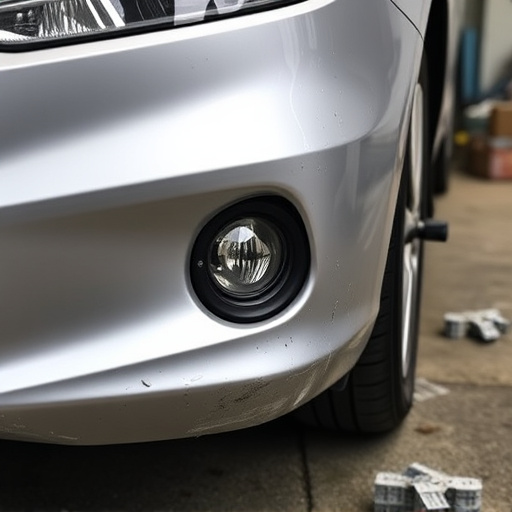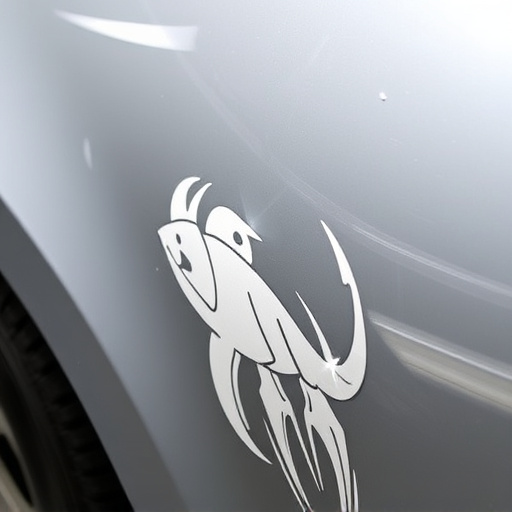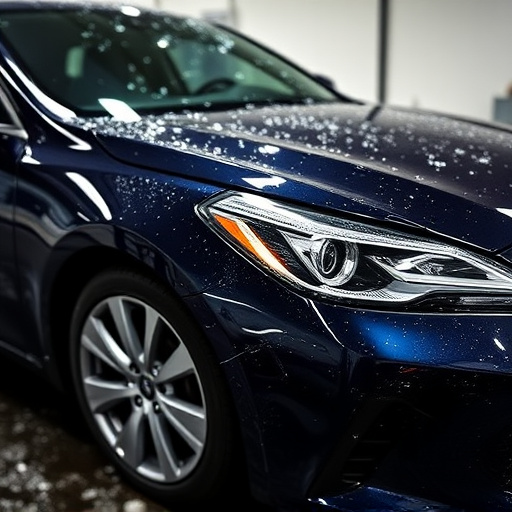The base coat application is a critical step in vehicle safety inspections and collision repair, ensuring structural integrity by preventing damage and enhancing safety features. Skilled technicians prepare surfaces meticulously to achieve even coating, avoiding issues like bubbles or cracks. Common problems like inconsistent thickness and overspray can delay repairs and fail inspections, emphasizing the need for high-quality products, precise techniques, and regular equipment maintenance for optimal base coat application.
In today’s digital era, vehicle safety inspections are paramount. One often overlooked yet critical component in this process is the base coat application. This article delves into the crucial role of the base coat in enhancing safety inspections, exploring its impact on vehicle protection and compliance. We analyze proper application techniques, common issues, and best practices to ensure optimal results, highlighting the significance of a well-executed base coat job in maintaining vehicle safety standards.
- Understanding Base Coat Role in Safety Inspections
- Impact of Proper Application Techniques
- Common Issues and Best Practices for Compliance
Understanding Base Coat Role in Safety Inspections
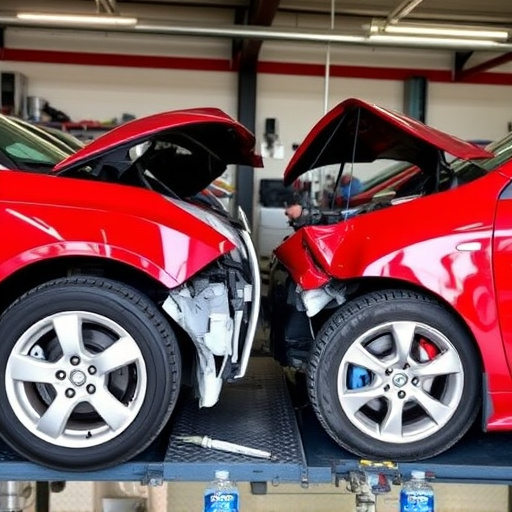
The base coat plays a pivotal role in vehicle safety inspections, serving as a foundational layer that significantly influences the overall structural integrity and safety of a vehicle. In collision repair shops, the meticulous application of a base coat is not merely an aesthetic consideration but a critical step in preparing a car for rigorous testing and inspection. It acts as a protective barrier, sealing the vehicle’s surface and safeguarding against potential damages, especially following dent removal procedures.
During safety inspections, this base layer is scrutinized for its quality and adherence, ensuring that it provides uniform protection across every inch of the vehicle’s exterior. Any defects or inconsistencies in the base coat application could compromise the structural integrity of the car, compromising safety standards. Thus, skilled technicians in collision repair shops must pay meticulous attention to proper base coat application techniques, ensuring a seamless and durable finish that not only enhances the car’s appearance but also reinforces its safety features, including effective car dent removal when necessary.
Impact of Proper Application Techniques
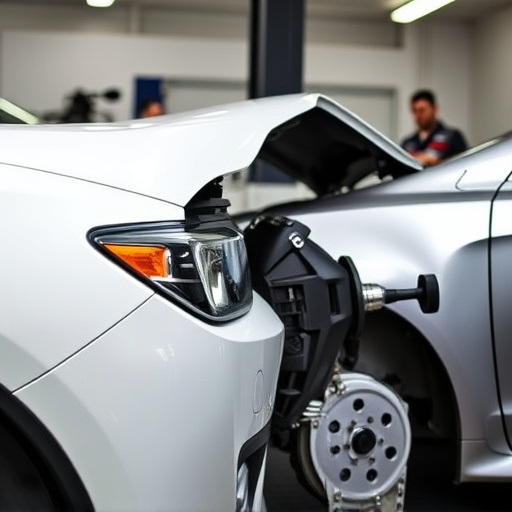
The proper application of a base coat in vehicle repairs plays a pivotal role in ensuring safety inspections pass with flying colors. Skilled technicians understand that meticulous attention to detail during this process is key. It involves carefully preparing the damaged area, ensuring it’s clean and free from contaminants. This includes sanding and priming to create a smooth surface for the base coat to adhere to evenly. Any gaps or imperfections left unaddressed can lead to paint bubbles, cracks, or uneven finishes, compromising the structural integrity of the vehicle during impact.
A skilled hand will also consider factors like temperature and humidity, allowing the base coat to dry optimally before adding subsequent layers. This meticulous approach isn’t just about aesthetics; it’s a critical step in the automotive restoration process, especially when addressing scratch repair or tire services. The goal is to create a durable barrier that not only restores the vehicle’s appearance but also fortifies its safety systems, ensuring compliance with inspection standards and enhancing overall roadworthiness.
Common Issues and Best Practices for Compliance
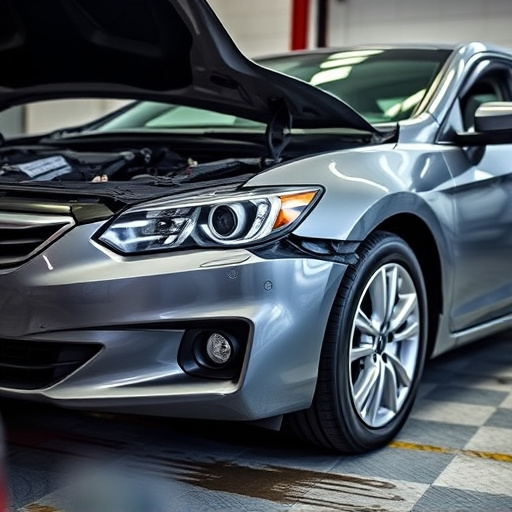
Common issues encountered during base coat application can significantly impact vehicle safety inspections, leading to delays and potential failures. One major challenge is inconsistent coating thickness, which can result from improper spray techniques or subpar materials. This inconsistency may leave vulnerable areas uncovered, compromising the structural integrity of the vehicle. Another frequent problem is overspray, causing environmental contamination and requiring additional cleanup efforts.
To ensure compliance and maintain high safety standards, auto body shops offering tire services and car damage repair must adhere to best practices. These include using high-quality base coat products designed for optimal adhesion and durability. Trained technicians are crucial in implementing precise application techniques, minimizing overspray, and achieving even coating distribution. Regular equipment maintenance and calibration further contribute to consistent results, ensuring that every vehicle undergoes meticulous base coat application during its repair process.
Base coat application plays a crucial role in vehicle safety inspections, influencing paint durability and adherence to regulations. Understanding its significance and implementing proper application techniques are essential for ensuring compliance and maintaining vehicle safety. By addressing common issues and adopting best practices, professionals can optimize base coat performance, enhancing overall vehicle integrity and safety during inspections.
